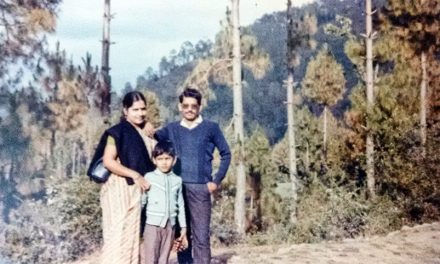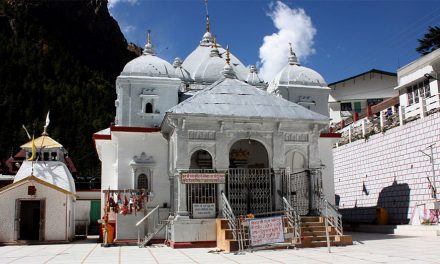The Masters of tens of millions of lives live here. They rule from a barrack-like building, set in grounds holding huge masonry structures that look like enormous versions of a child’s geometry set. And, in a way, that is what those edifices are. They were constructed over 275 years ago by Maharaja Jai Singh of Jaipur, governor of Ujjain.
Using these instruments today, as their predecessors had done, traditional astronomers and mathematicians like Pandits Bharat Tiwari and Giriwap Prasad Sharma write an annual ephemeris giving the predicted positions of nine celestial bodies for a whole year.
These meticulously accurate charts are printed, widely circulated, and referred to by astrologers all over India to prepare horoscopes governing the lives of crores of believers. Ujjain’s Vedha Shala is, undoubtedly, a most unusual but also, clearly, the most influential Observatory in the world. This, however, is only one of this ancient city’s fabled attractions.
History class
Reputedly colonised by migrants from the Harappan civilisation in 2015 BC, Ujjain has been a centre of scholarship, trade and pilgrimage for a reputed four millennia. Scholarship established the Prime Meridian of Hindu cartography through Ujjain. Trade routes linking the Mauryan capital of Pataliputra with the ports of the west coast ensured continuing prosperity for the town. And pilgrims homed into the famed temple of Mahakal, the Lord of Time, now the focal point of Ujjain.
In today’s troubled age, the great temple is ringed by barbed wire and bristling with security personnel and queue fences. But pilgrims still pour in, still worship in the small sanctum and then, ascending a few steps, whisper their requests into the silver ear of Nandi gazing down at his all-powerful Lord.
Haven of temples
Holy Ujjain is dotted with temples and you would have to be here for a busy month if you planned to worship in all of them. The Harsiddhi Ma Temple was installed by the Marathas when they ruled Ujjain. This temple of the Mother Goddess stands on an elevated plinth and its interiors have been richly decorated, with its ceiling holding the powerful Sri Yantra, prime emblem of the Mother.
In front of this temple is one of the 51 Shakti Peeths in India, Pakistan, Bangladesh, Nepal, Tibet and Sri Lanka. Devotees cannot enter this sunken temple, but may view the idol through the three viewing holes cut into its ceiling. These important temples are located in town.
Leaving them behind we drove out through scrub and farm-land to the greatly revered Sandipani Ashram. This small complex of buildings, set in a garden, is of particular interest to Krishna-bhaktas.
Legend says…
Here, apparently, the sage Sandipani taught Lord Krishna, Balaram and Sudama. The original ashram has been rebuilt as a temple enshrining the idol of Sandipani. The head priest here is Rupam Vyas who informed us that he was the 202nd direct descendant of the guru.
The shiva lingam installed in the temple in front of the Sandipani Temple represents Harihara, a pujari assured us. He also explained that as the Vishnu aspect of Harihara incorporates Krishna, the Nandi in front of this idol stands … and does not sit as he is usually depicted … in honour of the Cowherd Prince.
It is believed that the tank in the complex was created by Lord Krishna by causing the River Gomti to bubble up here so that his guru, who was from Mathura, could bathe in its sacred waters. Krishna also washed his slate in this tank and so it is known as both Gomti Kund and Ankpat.
We drove westwards from here through more truly rural terrain and parked outside the walled grounds of the Godkalika Mandir. A descriptive board at the entrance of the walled complex said that the great poet Kalidas had worshipped here and that the temple showed evidence of repairs and renovations from the first century BC to the modern reign of the Scindias. The single-celled temple sits on a plinth in the centre of a small courtyard with rooms all around. The idol of Kalika is a red head wearing a silver crown.
It is simple, unsophisticated, and clearly represents a very primal Deity, possibly worshipped from those very early days when this area was populated by tribal communities.
It is said that Kalidas’ genius blossomed only after he had worshipped here and many of the most important verses in his Meghdooth describe the glories of Ujjain.
Wish-fulfilling tree
Another shrine of legendary antiquity is the Siddhavat. At the edge of a terrace rising from the banks of the Shipra River rises the reputedly immortal Siddhavat Tree. It was, apparently planted by Sita and its roots go down to the nether world.
This is possibly why devotees come here to perform rituals for the repose of the departed souls of their near and dear ones. It is also, however, a kalpavriksh, a wish-fulfilling tree and threads are tied to it, milk poured on its branches and coconuts offered.
As sunset approached, we drove across a bridge spanning the Shipra River and went to the west bank ghats below the Monastery of Dutta Akhada. In the evening, Ram Ghat, rising out of the far bank, shimmered atop its reflections as if they had been embossed on watered silk. A small percussion band and a devotee with a conch assembled near us.
And then, at sunset, just as the lights winked on like fireflies all over Ujjain, a lone young pujari on our side began the evocative fire ritual of aarti. The drums beat, the cymbals crashed, the conch called, the moving lights spun swift, luminous, webs in the water capturing our minds in a spell that bridged countless centuries.
The Harappans had been a riverine people so they, too, had probably had such river-worshipping rituals. We had beamed back four thousand years to the time when those civilized people of the Indus Valley had fled from northern, equestrian invaders and laid the ancient foundations of the City of Ujjain.














You should stop perpetrating the Aryan Invasion myth.